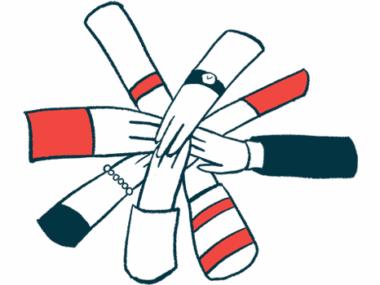CMT Research Foundation Partners to Study Inosine as CMT1X Therapy
Written by |

Lipik Stock Media/Shutterstock
The CMT Research Foundation is teaming up with the University of Illinois Chicago (UIC) to investigate a potential treatment for X-linked Charcot-Marie-Tooth type 1 disease (CMTX1), the second most common type of CMT.
Together, they aim to test whether inosine, an anti-inflammatory molecule, might act in ways that would ease CMT1X symptoms or change the course of the disease. Leading the project will be Charles Abrams, MD, PhD, a professor of neurology and rehabilitation at UIC.
“We are pleased to partner with Dr. Abrams and the University of Illinois Chicago to tackle this major form of CMT,” Susan Ruediger, CEO of the CMT Research Foundation, said in a press release.
“With this launch, the CMT Research Foundation now has programs in all four of the major forms of CMT, along with several of the more rare types as well. This project is particularly exciting because it has the potential to provide evidence to support the further development inosine as a therapeutic, which could ultimately benefit the vast majority of people with CMT1X,” Rudiger added.
In CMTX1, which affects nearly 15% of all CMT patients, mutations in the GJB1 gene lead to a dysfunctional connexin-32 (Cx32) protein.
The Cx32 protein forms channels on the cell membrane that are important for cell communication. These channels are typically found on Schwann cells, the cells that produce and maintain the myelin sheath the surrounds nerve cell fibers of the peripheral nervous system.
Nerve signal transmission is lost in people with CMT1X, resulting in muscle weakness, loss of sensation and/or numbness in the legs and arms, and deformities in the feet.
Normal channels formed by the Cx32 protein allow the passage of ATP, an energy-carrying molecule, which leaves the cell so it can be converted into inosine. This process may be affected in CMT1X because of the faulty Cx32 protein. According to the researchers, inosine levels are lower than usual in animal models of CMT1X.
The research team intends to test if low levels of inosine are involved in the nerve inflammation observed in CMT1X patients, and to determine whether increasing its levels brings benefits. Should this initial work show positive results, a study of inosine therapy in mice with a genetic mutation that causes CMT1X-like disease will be conducted.
“As a physician, I see many patients with CMT1X, but at the current time there are no effective medications that I can prescribe for them. As a scientist, though, I am heartened by the progress being made in understanding biological processes underlying CMT,” Abrams said.
“A lot of the evidence is pointing to a role for GJB1 proteins in regulating the levels of important anti-inflammatory molecules such as inosine. This project will be the first to directly test whether raising inosine levels in a CMT1X animal model will improve outcomes,” he added.
Although inosine is widely available as a supplement, seen as an athletic “performance enhancer,” the foundation advises against its use by people with CMT before safety and efficiency data are obtained.
“As a science-based organization, we do not recommend that people take supplements because they have not yet been tested in clinical trials, which is the only way to know whether they will be effective, let alone safe, for people with CMT,” said Keith Fargo, PhD, chief scientific officer of the CMT Research Foundation.




